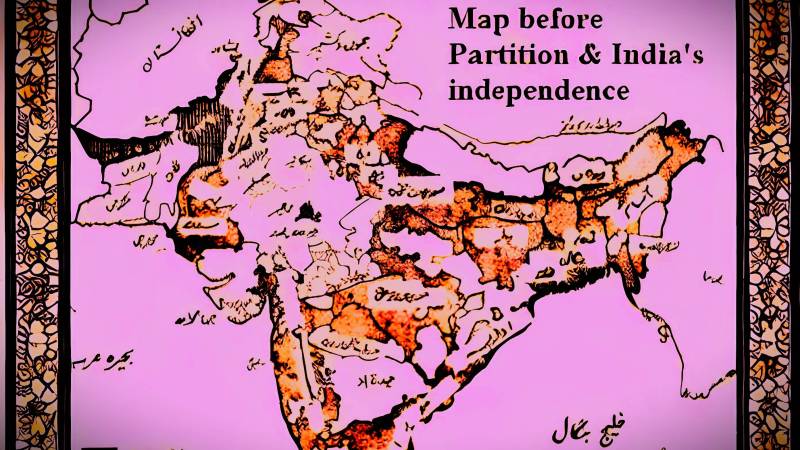
What would the world be like if India and Pakistan never separated? A united India would have had a population of over 1.6 billion making it the largest country in the world with more people than Europe, Africa and the Americas combined. It would also have the world’s largest Muslim population at over 600 million (if you combine the populations of Pakistan, Bangladesh and the Muslim population in India), which would still be a minority accounting for under 35% of India’s population and dwarfing in comparison to the Hindus who have a population of over 1 billion.
India would also have the largest armed forces with over three million active military personnel, out of which Muslims would account for a sizeable portion (around 40%) if the trends preceding partition continued. In terms of economy, India would lag far behind most modern nations with a large number of its population living in poverty. Its GDP per capita would stand at only around USD$2000 which is considerably lower than the per capita incomes of countries like Iran and China. India’s nominal GDP would be around the 2.5 trillion – 3 trillion ball park roughly equal to the economy of Germany.
However, if India were never partitioned and Pakistan never created and Pakistan never partitioned and Bangladesh never created, the country wouldn’t be held back by conflict and would not need to spend trillions on its war industry as the respective successor states of the union had to do. Imagine a country with the world’s second largest work force – after China in 1949 – with a British trained military hardened by the 2nd World War, a Westminster style constitution, a large industrial economy and an anglicized middle class. India would obviously be a force to be reckoned with both in economic and military terms. And with the absence of factors such as the Kashmir dispute her resources won’t be drained to support a stagnant military conflict nor would it be infested with terrorism.
A united India would pose a serious threat to other regional powers such as the China of 1949. Chang Kai Shek, leader of the Chinese Republic was a friend of India’s first prime minister, Jawahrlal Nehru; his communist successors would obviously harbor resentment towards the Oxbridge educated Indian leader as they did in the 1960s. But in this timeline India would have the advantage of being unified and could focus its attention on only one theatre of war. It would have been likely that India would have challenged Chinese hegemony not only in the Himalayas but also in Tibet which might have been independent and hostile to neighboring China.
A united India would also have grown closer to the West given its geographical proximity to USSR. This would have meant India turning into a frontline state in the anti-communist bloc in Asia despite Nehru’s socialist inclinations. This would also have resulted in India adopting laissez faire economic reforms earlier, probably in the early 1950s which would have resulted in a fast-growing economy – possibly the largest in Asia. India’s opposition to China and USSR would have prevented the Sino-Soviet split and would have drawn India closer to countries like Japan and Iran under the Pahlavi monarchy.
Indian politics would also have been very different with no single party being able to form a majority in the parliament. Caste based and ethnic parties such as the Unionist Party, Janata Dal, the Awami League, Biju Janata Dal, Awami National Party etc. would have featured strongly in national politics ceding little ground to religiously divisive parties such as the BJP. The Muslim vote might have remained united and thrown its weight behind the Muslim League or the Muslim League might have collapsed after the death of Jinnah splintering into several factions as it did in Pakistan during its formative years (1950s). In this scenario, the Muslims would have supported secular parties such as the Congress or the Unionists.
The communists would have remained united and their power would not have been diluted as a result of partition. They would have naturally found support in East Bengal, rural Punjab, Sindh and Baluchistan in addition to being popular in Kerala and West Bengal. The political spectrum however would be divided between the Congress and the Mandalists of the Hindi/Urdu belt with regional parties and interests (such as the interests of the Muslim elite in UP) featuring strongly. In other words, it would become a contest between the Brahmin and the non-Brahmin vote. Religious politics would decline after the frenzy of the pre-partition years (Khilafat movement, Pakistan movements) and the people, despite being socially conservative would respect diversity in religion.
In conclusion, an independent Indian Union with its borders stretching from Chitral to Chittagong and encompassing the entire sub-continent could have been the largest, most powerful country in Asia. However, that was not to be as politicians representing interests of the country’s major religious groups failed to reach agreement to keep the country together as per the cabinet mission plan in June 1947 and led to the largest displacement in modern history. Partition was a surgical procedure in the words of Jinnah which ended up altering the course of history forever.

